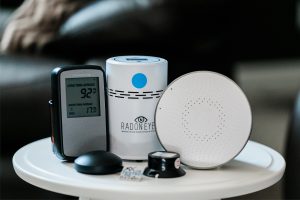To most homeowners, a home is not complete without a finished basement. Not only are basements an extension of a home, but they can also be used as a living space. However, since they are often located in a below-grade area, they are prone to issues such as mold and dampness.
If not addressed, this can lead to water damage on items in the basement and flooring and storage space.
Mold issues arise when humidity is high in the basement. Another culprit for such issues is water leaks and rain. If you want to ask for assistance, schedule an appointment with a professional.
As such, the most important step that homeowners can take is to dehumidify their basement. If you are struggling with mold issues in your basement, you must be wondering how to dehumidify the basement. Keep reading as we explore expert tips that you can take.
What are the signs that you need to dehumidify the basement?
- You notice walls that are damp to the touch
- Condensation on your basement windows
- If you notice mold in the basement
- If the basement has a musty or moldy smell
- If you see watermarks on the floor (In such a scenario, dehumidifying the basement is a temporary fix since this indicates a problem with the basement.)
What is the best way to dehumidify the basement?
Install a dehumidifier
A dehumidifier is the best fix to control the overall humidity issue. And since basements are more prone to humidity issues than other home areas, a dehumidifier is necessary. Luckily, dehumidifiers are not expensive, and in most cases, they are effective in solving humidity issues.
If your basement does not have adequate ventilation, a single humidifier may not work optimally. As such, homeowners who have basements with additional rooms may need to purchase basement humidifiers. If you purchase a humidifier with a top-mounted air discharge, you can place it against the wall. Also, every homeowner should ensure they familiarize themselves with the humidifier model specifications for optimal placement.
Ensure the basement is well ventilated
Most homeowners wonder how to dehumidify their basement without a dehumidifier. Proper ventilation is the best way to solve humidity issues in the basement. For instance, opening doors and windows ensure that the air circulation remains at an optimal level. And when combined with other measures such as running fans, the chances of experiencing humidity issues are significantly reduced.
Keep the basement warm even during winter
Many basements are used more in the summer. Some homeowners, however, assume that turning down the heat in the basement during the winter is acceptable. This only leads to the build-up of excessive mold growth and moisture. Maintaining an optimal temperature or keeping the basement warm even when not in use can reduce humidity issues.
Check the flooring installed in the basement
Many basements are barely used. As such, homeowners may shy away from investing in proper flooring. Carpeted basements provide a perfect breeding ground for mold and mildew. And when dust and other biodegradable materials settle on the carpet fibers, you will have a difficult time eliminating mold. If your basement is more prone to humidity issues, installing tile, vinyl, or other types of flooring that prevent the growth of mold is recommended.
Carry out routine ventilation and ductwork maintenance
This is one of the best ways to dehumidify the basement. Ductwork and ventilation systems control airflow in a home. However, when damaged, they can disrupt the circulation of air. For instance, if the ductwork has a leak, the result is inefficient airflow which invites moisture into spaces. Ensuring that ductwork and ventilation are regularly maintained can prevent humidity issues.
Rethink storage in the basement
Basements provide good storage space. However, storing items in boxes that are not biodegradable is the perfect way to attract mold in the house. The wrong storage choices collect dampness and provide a breeding ground for mold forcing homeowners to dehumidify their basement regularly. Also, placing storage boxes off the floor prevents them from getting damp.
Be on the lookout for air leaks
If you are constantly wondering how to dehumidify your basement, the culprit to the humidity issues could be air leaks. Check for air leaks in the nearby pipes or the basement’s surfaces. Small air leaks can be fixed with caulk or other recommended sealants.
Try natural ways to dehumidify the basement
If you are looking for simpler ways to control moisture in your basement, dehumidify the basement naturally. When done well, it is a sure way to achieve a healthy and comfortable level of humidity. This is a great option for people who are conscious of the dry air that results from using a dehumidifier. For instance, using pots of calcium chloride or humidity-lowering plants in problem areas results in a quick reduction in humidity.
Common mistakes that homeowners make when using dehumidifiers
Failing to set the right humidity level
The optimal humidity level ranges between 30-50%. When it gets colder, this should be set between 30- 40%. If the humidity is higher than this, it can breed mildew, mites, and mold. Also, if the humidity dips too low, it can trigger allergy-like symptoms such as itchy eyes and dry skin. Monitoring humidity levels via a reliable HVAC thermostat can alleviate humidity issues in the entire house.
Picking the wrong dehumidifier size
Basements are more prone to humidity issues due to their placement. While using a dehumidifier is effective at eliminating these issues, choosing the wrong size is a huge mistake. Placement is another issue that most homeowners get wrong. If you have a portable dehumidifier, you can place it against the wall. If it is not portable, ensure to place it away from walls to get air to freely circulate around the unit.
Not emptying dehumidifiers regularly
Most portable dehumidifiers have a portable bucket and warning lights that indicate when the bucket needs to be emptied. Dehumidifiers also have an automatic shut-off valve when the bucket gets full. If the water is not emptied for a significant period, mold can start growing on the humidifier. Homeowners who may have a problem remembering to empty the bucket can purchase a dehumidifier that has a fitting that allows the water to be emptied into a sump pump or floor drain.
Leaving doors and windows open when the humidifier is on
Dehumidifiers work optimally in an enclosed space. If a window is left open, outside water will be pulled into the house.
Not cleaning the dehumidifier regularly
Dehumidifiers suck moisture from the air. However, other things such as dust, mold, and pollen also get pulled in. As such, homeowners should ensure to clean the dehumidifiers regularly. Once cleaned, ensure the machine air-dries completely before starting it.




